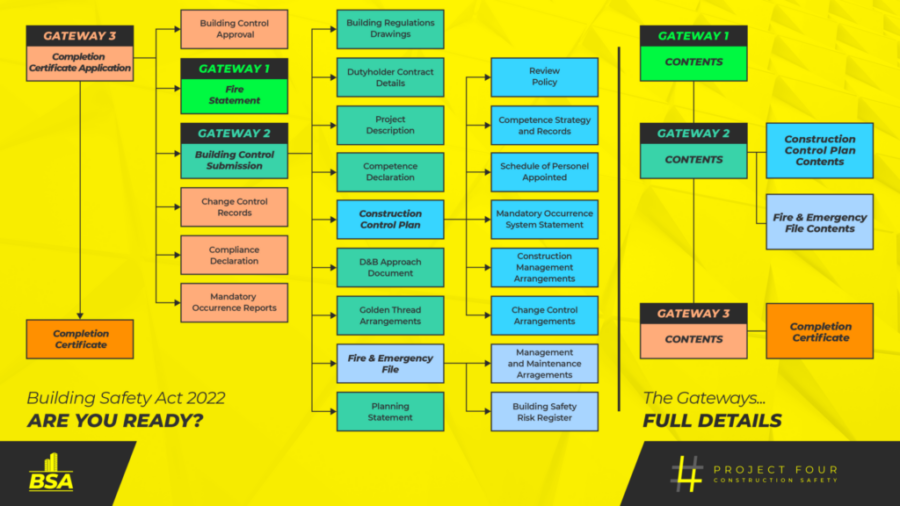Commentary
There is no time to waste on Building Safety Act compliance
The time for talking is over, now is the time to act to get your business in compliance with the new regulations, writes Alan Robson, managing director of Project Four Safety.
The Building Safety Act is here, it has Royal Assent, and enforcement is on the horizon. This month sees the official launch of the Building Safety Regulator and the requirement to register occupied high-risk buildings.
At the same time, we are hurtling at pace towards the introduction of Gateway 2 and Gateway 3, which will be crucial steps that must be done in order to achieve compliance for your project. They follow the introduction of Gateway 1 in August 2021.
As you can see, there really is not any time to waste.
That was the sentiment echoed by Dame Judith Hackitt, author of the independent review of building regulations for the government, when we saw her at the second Culture Change in Construction conference in March.
Her keynote speech posed an important question for the industry: are you with the leaders or the laggers? In essence, will you be at the forefront of making the industry safer or will you resist change as long as possible knowing that you will have to embrace it eventually?
And we all will have to embrace it. Excuses around waiting for subordinate legislation will not act as any defence for why you chose not to move forward with the newest building safety regulations.
We are concerned – and so is Hackitt – that the penny has not yet dropped within the industry. Too often people ask if us BSA is ever going to happen (yes, it will) and tell us that it does not impact them because they do not do high-rise residential (yes, it does).
It seems to me that many industry stakeholders have failed to truly consider the Building Safer Future report produced by Hackett in May 2018. Obvious delays in enacting the report’s findings (we’re looking at you Covid-19, general election, and Brexit), plus the legislation’s complex nature have led many to bury their heads in the sand when it comes to the fact that come October the Building Safety Regulator will be enforcing these new rules.
At this rate, many individuals and organisation alike will be in breach of significant chunks of legislation.
Project Four has been planning for the release of this legislation for more than two years. We have been growing our team strategically so that it now includes a host of specialist construction professionals who know the new rules inside/out. This includes architects, surveyors, fire specialists, and executive-level safety professionals.
We want to ensure that no matter your field, you understand what BSA means for you and what you need to do to be compliant.
One of the focal points (and a good take away from your efforts for reading this blog) is competence. But this will not be compliance as we know (or think we know) based on the industry response to CDM 2015.
I often use the term in our briefing sessions: “Think of the BSA like CDM, but on steroids”.
That means achieving competence is going to need serious thought. Competence will need to better planned, structured, considered, and maintained.
Competence is an ongoing process that should not, like many things in safety, be viewed as a box ticking exercise. Legislation is helping drive this point home, mandating that there be evidence of continuing professional development.
Developing a building’s safety case should also be on your company’s to-do list. The safety case is significant as it brings greater and clearer responsibility on individuals to ensure that a building is safe and continues to be so.
A safety case reminds us all that people are at the heart of building safety. Unsure of what this looks like? Don’t worry, we’ll have more on that in another column later this year.
In the meantime, it is clear that there is a lot of work to be done. Change is happening. We, as an industry, need to embrace it and start now on preparing what will be required. It is clear that the government is not slowing down in its efforts to ensure Grenfell never happens again. We need to do the same.
- Alan Robson is managing director of Project Four Safety






